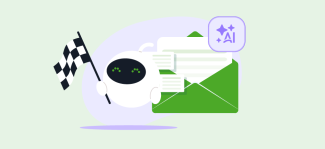Cracking the Code On How to Increase Conversions in the Experience Industry
With sky-high expectations for conversion and yet little connection between increased conversion and increased marketing budgets, businesses in the Experience Industry (i.e Travel agencies, hotels, and events-based businesses like the cinemas, corporate events) continue to hopelessly grapple with low conversion rates in moments where they need an edge more than ever before—like, right now!
This begs the question: “How to increase conversions.”
Conversion rate is simply the percentage of prospective clients who complete the desired action/CTA. Thus, for digital marketing, your conversion rate would refer to the percentage of people who clicked your ad or opened your marketing email.
For sales, your conversion rate would be the percentage of people who viewed your ads and went on to complete a purchase.
Again, conversion rates are not usually a reflection of marketing budgets. If your conversion rates are low, it’s highly likely that it’s because you’re flopping your marketing strategy or have none in place for starters.
Hence, rather than commit further funds to a strategy that is dead in the water, why don’t you eat some humble pie and revert back to your marketing drawing board?
How do you increase sales conversion?
To increase conversion rates, chances of success can lie within embracing what already works while focusing on how you could tweak certain aspects of your business model or marketing strategy.
Either way, these tested and timeless steps are all the ‘shortcuts’ you need on your way to increasing conversion rates:
Optimise your strategy using conversion funnel templates
Conversion funnels comprise the entire stages of a buyer’s journey from when they become aware of your business (as a lead) right up to when they make a purchase (become customers).
It all begins with awareness, from where potential customers may then develop interest. This interest then translates into desire, which finally results in sales. When you use this model to map your customer’s lead-to-customer transition, you’re more likely to generate sales when you let the process run its course.
Your conversion funnel asks (and answers) critical, crunch-time questions like: “Are people more likely to convert when they have just learned about my offerings, or after they’ve come in contact with it for some time?”. With a well-detailed conversion (also called “sales”) funnel, you can craft content that is relevant to the stage of each potential customer in your buyer’s journey.
Typically, your buyer’s journey should take stock of 5 stages: (We’ve included analogies for your easy comprehension)
Attention: This is where you, the seller, dangle a scrumptious offering of a pack of crispy, chewy chocolate cookies right in your (carefully vetted) prospect’s email inbox. They read it. They like what they see. But still largely undecided.
Interest: They can’t help but click on your generous offer. You kick-start a chocolate lover’s affair with them using content that screams, “Chocolate Lover! You probably chip in with a link to your website too! They hop in. Their foot is in the door now. But remember, the catch here is to convert.
Desire: To invoke desire, you trigger some serious hankering with your content (photos that capture the imagination and whatnot)—the kind to invoke a serious streak of chocolate craving that draws them into your world.
Conversion: Does exactly what it says on the tin. This is literally where all the internal debates fade away and they go “OK. I’ll fancy sinking my teeth in some of these, fitness goals be damned!” and they ultimately give in with a purchase, thus concluding their complete metamorphosis from prospect/lead to customer. (Bravo you!)
Re-engagement: A gentle, tap-on-the-shoulder reminder to become repeat buyers is your goal here. To stay relevant in their mind, you curate promotional emails and loyalty rewards. They find your brand relevant to their wants, that way, you stay top of their mind. You also chime in with some other snacks of tasty, melt-in-the-mouth goodness (upsells & cross-sells!) that you have on your store’s shelves.
Perform A/B testing
To revamp your marketing and increase conversion rates, the first weapon in your arsenal should be testing. It’s not enough to pull the plug on campaigns that simply would not generate enough response. You need A/B testing to feel the pulse of your audience's needs and desires.
A/B Testing simply involves creating two different versions of the same marketing campaign, varying either the content or the design, and then collecting and examining the audience’s response. That way, you can find out which options are more likely to catch their attention and then leverage this insight to optimise your marketing campaigns.
Curate clear messaging and compelling copy
Wanna bore clients to death and increase bounce rates? Superfluous, technical words are always a good place to start. Since your ads are going to be targeted at regular people, they should be written using plain, easily understandable language.
Clarity is not just about your choice of diction. It also involves the central messaging goal of your ad copies. Frequently, the best way to make sure that message doesn’t get lost is to include a clear call-to-action at the end. Nothing is clearer than a one or two-sentence conclusion that, when whipped with a sense of urgency, tells the audience what you offer and why they should do as your CTA’s told them.
Optimize your signup, sales forms, and processes
One underreported cause of low conversion rates is the use of long-winded signup and sales processes. The longer a prospective customer has to spend on these processes, the greater the chance that they become uninterested.
Another step that you can take to increase your conversion rates is to optimize your signup forms and pre-sale protocols. Your design should be catchy enough to compellingly prolong the ever-thinning attention spans of your audience.
Instead of multiple fields for first names, last names and other non-vital information, use just two fields for username and password. They can proceed to input all their other information later on.
Similarly, the process of making reservations and obtaining tickets should be simple. It’ll be helpful to enable your clients to save their banking information on your website (you must be ready to offer the security details required for such a feature). That way, every time they want to make a purchase, all they have to do is confirm the action with one click, instead of having to enter their particulars all over again.
Create a community using social media
Social media is a vital part of digital marketing. However, too many brands just create social media accounts and then rest on their laurels.
It’s not enough to just have an account where you post the occasional public service announcement. You’ll need a social media presence to build and nurture an online community—one that’ll serve as the first touchpoint in your conversion funnel.

Mobile-friendliness
More than ever, people are accessing websites, emails and literally everything on their mobile devices. Existing data suggest that 85% of users prefer to access their emails using their smartphones.
Neglecting to adapt your marketing strategy and ads to your mobile using audience will mean shutting off shop to more than half the market. You wouldn’t want that now, would you?
The content-saturated nature of the digital space has led to shorter attention spans than ever. If you can’t pique their interest in the first five seconds, they’re more than likely to scroll. You can also trust that the patience to tilt phones awkwardly just to view a piece of advertisement content is in scarce supply. It’s that simple.
Ultimately, you want everything from your website to marketing emails and banner ads to be optimised for mobile devices. The more people who can read your ads, the more clicks you generate.
Pop in with some ‘Pop-ups’
Pop-up ads, though one of the most annoying features on the internet, surprisingly generate some of the highest conversion rates in advertising.
Think about it—considering how intrusive they are, would they continue to grow as a form of advertising if there weren’t substantial upsides to using them? (Pop-ups have a success rate of 3%. Super-lean numbers at a glance, but thrice as higher than using passive signup forms beneath your content.)
If you don’t already use pop-up ads, then you should, as a matter of urgency, include them in your marketing strategy. Whether you’re starting at the beginning of the conversion funnel or trying to make an outright sale with a bold CTA, it’s infinitely rewarding.
Set up clear communication lines
There is nothing as off-putting as being unable to find communication lines to a service provider. The most common break in the pyramid of communication here is a mismatch between the medium of advertising and the medium of communication provided.
Align communication options to the medium of advertising. For example, if your ad is airing on TV, calling out phone numbers is the best way to open communications.
Take feedback, both positive and negative. Encourage your customers to inform you about what they feel about your service. You can incorporate the positive feedback that you get into your marketing content, and you can take lessons from the negative to improve your services.

… Activate ‘Conversions galore’ with Apsis
You don’t necessarily have to outspend competitors to increase conversion rates. With the right approach and operational tweaks to align with your industry-specific realities, you can hit and surpass record financials that have seemed improbable for soooo long.
With clients across various industries, Apsis One is your business’ best friend. We’ve built an enviable reputation that helps companies realise their marketing ambitions. Armed with sooo much knowledge of the varying variables that contribute to the overall result of marketing campaigns, we’ve tailored different campaign templates towards different industry-specific groups.
Oh, and that includes one for the experience industry too! Curious to find out how it works? Here’s a wave of the arm to you about how gloriously rewarding a decision it’ll be if you booked a demo!


